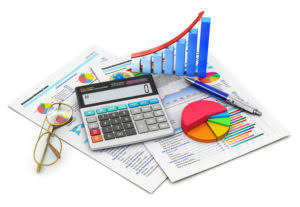
Investors also use this ratio to decide when a company may be purchasing major new fixed assets. Fixed assets are usually found on a balance sheet in a category called property, plant and equipment, according to Dummies. And you also need to account for any liabilities, like loans you owe on your fixed assets.
Goods production
Current assets are assets that the company plans to use up or sell within one year from the reporting date. This category includes cash, accounts receivable, and short-term investments. Generally, a company’s assets are the things that it owns or controls and intends to use for the benefit of the business.
Accounting for Fixed Assets
An example policy, scrutinizable for structure and detail, can assist in understanding what a comprehensive policy looks like. It can serve as a foundation upon which to build a customized policy for your company. Your policy should be crystal clear to anyone who reads it, using language that avoids ambiguity and interpretation.

Template for creating a fixed asset policy
You can calculate depreciation on all fixed assets (except land) to account for general wear and tear. Compared to current assets, which have a lifespan of less examples of fixed assets than a year, fixed assets have a useful life beyond a year. In a restaurant, for example, there are many fixed assets necessary to run an effective business.
This examination seeks to unravel the complex relationship between real-world assets and the numbers that define an organization’s financial reality. Fixed assets are renowned for their durability, potential to yield future https://www.bookstime.com/ economic advantages, immobility, and their pivotal role in a company’s overall financial robustness. The asset’s cost is $20,000 and the salvage value is $4,000 which calculates to a depreciable base of $16,000.
Risk & compliance management
Some industries need more fixed assets than others in order to make products or deliver services. These include the construction, farming, transportation and fishing industries. Fixed assets are physical (or “tangible”) assets that last at least a year or longer. Fixed assets are also known as capital assets, according to The Balance. They represent substantial investments, forming the backbone of a company’s operations and enabling revenue generation.
Tangible vs. intangible assets

This article answers the most important questions regarding fixed assets in accounting. This is because it’s considered a long-term resource (used for over 12 months) to help the business generate income. Fixed assets like cars are subject to depreciation, which is the process of allocating the cost of the asset over its useful life to reflect its wear, tear and loss of value. This includes factories, warehouses, office buildings, retail storefronts, and any other land or structures your company owns. These assets provide the critical space you need to conduct business and store your inventory. Fixed assets aren’t like inventory that you can readily sell to customers.
- Moreover, bond investments held at brokerage firms are backed by the Securities Investor Protection Corporation (SIPC) up to $500,000 coverage for cash and securities held by the firm.
- It’s important to have a comprehensive understanding of fixed assets accounted for.
- Organizations may present fixed assets in a number of different ways on the balance sheet.
- In the context of formulating a depreciation policy, understanding the basic rules of depreciation is integral.
- Fixed income as an asset class is generally less volatile than equity (stocks), and is considered to be more conservative.
Sum of remaining years’ digits method
- The most common government securities are those issued by the U.S. government and are generally referred to as Treasury securities.
- Under U.S. GAAP reporting, fixed assets are typically capitalized and expensed across their useful life assumption on the income statement.
- Stocks tend to be riskier with higher potential returns, while fixed income securities are safer with usually lower returns.
- Many organizations would not exist or generate revenue without their property, plant, and equipment.
- Companies can depreciate the value of these assets to account for wear and tear.
- Fixed income refers to debt investments that pay a fixed rate of interest, along with the return of the principal loaned upon maturity.
- For instance, a cybersecurity company might list computer equipment as a fixed asset.
- If you’re a stock investor or an employee of a public company, you may be interested in seeing what a company reports as its current and fixed assets, and how these numbers change over time.
- Generally, companies establish their own capitalization thresholds to determine which assets qualify as fixed assets.
- Yet, inventory is classified as a current asset, whereas PP&E is treated as a non-current asset.
- That is because most fixed assets are items that have been bought to serve a business purpose.
- Fixed assets are often referred to as property, plant, and equipment, or PPE—the three most common kinds of fixed assets.
- Fixed rates are great to reduce risk, but once you’re locked in, you can’t increase the rate.
